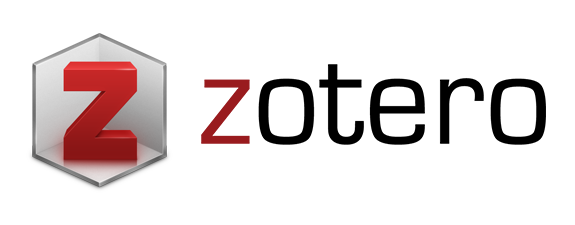REAL-LIFE READING: A SYSTEMATIC REVIEW
Abstract
Real-life reading, which is defined as reading that takes place in regular situations outside of controlled environments, is examined in this systematic study. The study's objectives are to determine the variables affecting these behaviors, analyze the approaches taken, and point out areas that require more investigation. A thorough database search was carried out using PRISMA criteria and keywords like "real-life reading" and "everyday reading." Laboratory-based research were removed, while those that focused on naturalistic reading behaviors were included. Key findings, methods, participant demographics, and objectives were all covered in the data extraction process. Three primary themes emerged from the review: (1) Contextual Factors: Situational and environmental factors have a big impact on reading habits; (2) Technological Influences: Digital devices have changed how people read; and (3) Methodological Challenges: Studying real-life reading is made more difficult by problems like ecological validity and participant variability. The results indicate that reading in real life is dynamic and context-dependent, although there are no established approaches in the literature. To properly record natural reading activities, new technologies are required, such as digital logs and wearable eye-trackers. To improve generalizability, future research should also examine a variety of populations and environments. By highlighting the significance of closing gaps between research and practical reading behaviors, these insights can guide interventions, technological design, and instruction to increase everyday reading engagement.
Keywords
Full Text:
PDFReferences
Adelina, E. (2023). Online Real-Life Situation Questionnaires To Develop Top-Down Reading Skill. Jurnal Vokasi Indonesia, 11(1). https://doi.org/10.7454/jvi.v11i1.1194
Anggraini, G. F., Sunendar, D., Damayanti, V. S., & Musthafa, B. (2024). Building The Bridge for Teacher-Parents Collaboration in Enhancing Children Critical Literacy Skills : A Systematic Literature Review. August, 101–110.
Dania, R., & Adha, A. D. (2021). The Challenges of Using Online Authentic Materials in Reading Classroom for First-Year EFL Students. Proceedings of the Thirteenth Conference on Applied Linguistics (CONAPLIN 2020), 546(Conaplin 2020), 433–436. https://doi.org/10.2991/assehr.k.210427.066
Dwyer, D. J., & Street, B. V. (1997). Social Literacies: Critical Approaches to Literacy in Development, Ethnography and Education. In The Journal of the Royal Anthropological Institute (Vol. 3, Issue 3). https://doi.org/10.2307/3034794
Elías-Cabot, E., Romero-Martín, S., Raya-Povedano, J. L., Brehl, A. K., & Álvarez-Benito, M. (2024). Impact of real-life use of artificial intelligence as support for human reading in a population-based breast cancer screening program with mammography and tomosynthesis. European Radiology, 34(6), 3958–3966. https://doi.org/10.1007/s00330-023-10426-4
Franssen, R., Voorn, M., Jetten, E., Bongers, B. C., van Osch, F., & Janssen-Heijnen, M. (2024). Real-life effectiveness of prehabilitation to improve postoperative outcomes in patients with colorectal cancer approaching surgery: A systematic review and meta-analyses of observational studies versus randomized controlled trials. European Journal of Surgical Oncology, 50(12), 108708. https://doi.org/10.1016/j.ejso.2024.108708
Gee, J. P. (2014). How to do Discourse Analysis. In How to do Discourse Analysis. https://doi.org/10.4324/9781315819662
Jasionis, A., Puteikis, K., & Mameniškienė, R. (2021). The impact of social cognition on the real-life of people with epilepsy. Brain Sciences, 11(7). https://doi.org/10.3390/BRAINSCI11070877
Mohinur, J. (2020). THE USE AUTHENTIC MATERIALS IN THE TEACHING OF READING. 106–111.
Nilforoushan, S., Rashtchi, M., & Abbasian, G. R. (2023). Exploring the Perceived and Real Metacognitive Reading Strategies of Iranian EFL Learners: Different Text Types in Focus. SAGE Open, 13(1), 1–11. https://doi.org/10.1177/21582440231164567
Pflepsen, A., Gove, A., Warrick, R. D., Yusuf, M. B., & Bello, B. I. (2020). Real life lessons in literacy assessment: The case of the early grade reading assessment in Nigeria. International Perspectives on Education and Society, 30, 129–145. https://doi.org/10.1108/S1479-367920160000030011
Sobczak, Ł., Filus, K., Domańska, J., & Domański, A. (2022). Building a Real-Time Testing Platform for Unmanned Ground Vehicles with UDP Bridge. Sensors, 22(21), 1–14. https://doi.org/10.3390/s22218493
Spjeldnæs, K., & Karlsen, F. (2024). How digital devices transform literary reading: The impact of e-books, audiobooks, and online life on reading habits. New Media and Society, 26(8), 4808–4824. https://doi.org/10.1177/14614448221126168
Sugiarti, & Prihatini, A. (2023). Fiction vs. Reality: How Students Discover Real-Life Representations in Prose Using Engaged Reading. Journal of Language and Education, 9(4), 85–98. https://doi.org/10.17323/jle.2023.13287
DOI: https://doi.org/10.24176/simple.v3i1.14173
Refbacks
- There are currently no refbacks.
SIMPLE: International Journal of English Education is licensed under a Creative Commons Attribution-ShareAlike 4.0 International License.
Dedicated to:







